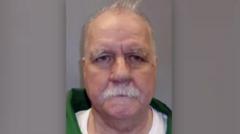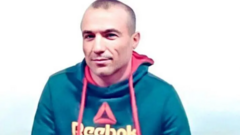In a shocking return to controversial methods of execution, Brad Sigmon became the first US inmate executed by firing squad in 15 years in South Carolina, prompting discussions on the death penalty's ethics and execution methods.
First US Firing Squad Execution in 15 Years: A Controversial Redemption?

First US Firing Squad Execution in 15 Years: A Controversial Redemption?
Brad Sigmon executed for double murder, invoking new debates on capital punishment and methods used.
In a historic moment for the US justice system, Brad Sigmon was executed by firing squad on Friday in South Carolina, marking the first such execution in the country in 15 years. Sigmon, 67, was convicted for the gruesome 2001 murders of his ex-girlfriend's parents, David and Gladys Larke, in which he bludgeoned them to death with a baseball bat before kidnapping his ex-girlfriend at gunpoint. Despite his violent past, Sigmon requested to die by firing squad, which was honored by the state.
The execution occurred just after 6 p.m. local time, with three volunteers firing specialized bullets at his chest from a distance of 15 feet. Chrysti Shain from the South Carolina Department of Corrections confirmed that Sigmon was pronounced dead shortly after the execution. Family members of the victims were present during the procedure, which saw Sigmon delivering his final words of love and apology, quoting the Bible in a last-minute plea regarding the death penalty.
During the execution, Sigmon was strapped to a chair and had a red bullseye target placed over his heart, concealed behind a curtain which opened for the firing volunteers. Witnesses described a shocking scene, with reports of blood splattering as the bullets entered his body. Eyewitness accounts highlighted his physical reaction during the shooting, raising questions about the execution's humanity.
Sigmon's attorney, Bo King, had sought to delay the execution on mental health grounds, arguing that Sigmon displayed signs of rehabilitation during his time in prison. His last meal was a gesture of goodwill—three buckets of Kentucky Fried Chicken—to share with fellow inmates, which King claimed symbolized his character.
While death by firing squad is rare in the United States, South Carolina is one of the few states to still utilize this method, alongside lethal injection and the electric chair. Anti-death penalty advocates protested outside the prison, emphasizing the sanctity of all life and opposing the return of such lethal measures.
As discussions surrounding capital punishment continue, Sigmon's execution raises ethical questions regarding not just the method of execution, but also the principles behind the death penalty itself.
The execution occurred just after 6 p.m. local time, with three volunteers firing specialized bullets at his chest from a distance of 15 feet. Chrysti Shain from the South Carolina Department of Corrections confirmed that Sigmon was pronounced dead shortly after the execution. Family members of the victims were present during the procedure, which saw Sigmon delivering his final words of love and apology, quoting the Bible in a last-minute plea regarding the death penalty.
During the execution, Sigmon was strapped to a chair and had a red bullseye target placed over his heart, concealed behind a curtain which opened for the firing volunteers. Witnesses described a shocking scene, with reports of blood splattering as the bullets entered his body. Eyewitness accounts highlighted his physical reaction during the shooting, raising questions about the execution's humanity.
Sigmon's attorney, Bo King, had sought to delay the execution on mental health grounds, arguing that Sigmon displayed signs of rehabilitation during his time in prison. His last meal was a gesture of goodwill—three buckets of Kentucky Fried Chicken—to share with fellow inmates, which King claimed symbolized his character.
While death by firing squad is rare in the United States, South Carolina is one of the few states to still utilize this method, alongside lethal injection and the electric chair. Anti-death penalty advocates protested outside the prison, emphasizing the sanctity of all life and opposing the return of such lethal measures.
As discussions surrounding capital punishment continue, Sigmon's execution raises ethical questions regarding not just the method of execution, but also the principles behind the death penalty itself.



















